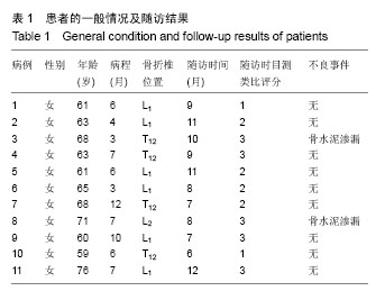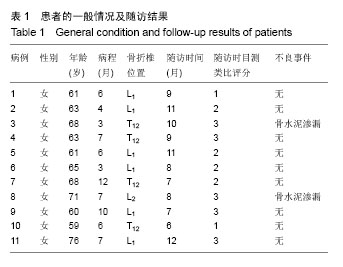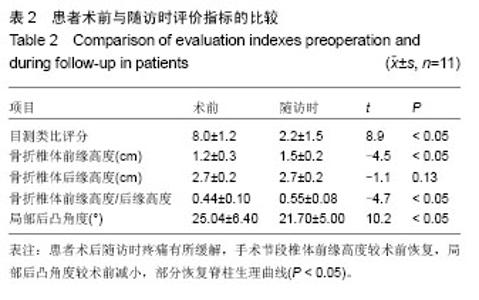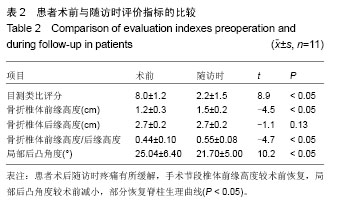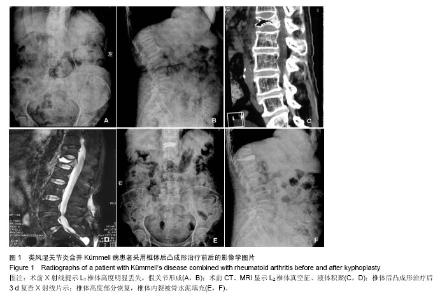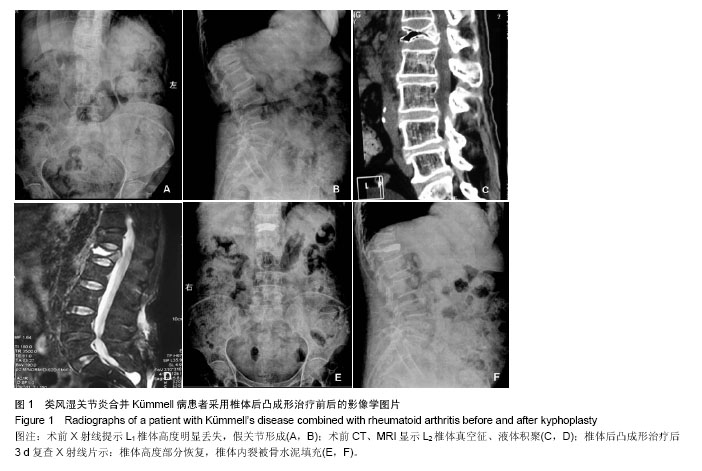| [1] Lange U,Teichmann J,Muller-Ladner U,et al.Increase in bone mineral density of patients with rheumatoid arthritis treated with anti-TNF-alpha antibody: a prospective open-label pilot study.Rheumatology(Oxford).2005;44(12):1546-1548.
[2] Haugeberg G,Green MJ,Quinn MA,et al.Hand bone loss in early undifferentiated arthritis:evaluating bone mineral density loss before the development of rheumatoid arthritis.Ann Rheum Dis. 2006,65(6):736-740.
[3] Haugeberg G,Strand A,Kvien TK,et al.Reduced loss of handbone density with prednisolone in early rheumatoid arthritis:results from a randomized placebo.controlled trial.Arch Intern Med. 2005; 65(11):1293-1297.
[4] Steel HH. Kummell’s disease.Am J Surg. 1951;81:161-167.
[5] Theodorou DJ.The intravertebral vacuum cleft sign.Radiology. 2001;27:787-788.
[6] Libicher M, Appeh A. Berger I, et al. The intravertebral vacuum phenomen as specific sign of osteonecrosis in vertebral compression fractures:results from a radiologicat and histologieal study.Eur Radial.2007;17:2248-2252.
[7] Jang JS, Kim DY, Lee SH. Efficacy of percuteneous vertebroplasty in the treatment of intravertebral pseudarthrosis associated with nonin-fected avascular necrosis of the vertebral body.Spine. 2003;28:1588-1592.
[8] Linn J, Birkenmaier C, Hoffmann RT, et al. The intravertebral cleft in acute osteoporotic fractures:fluid in magnetic reoonanee imaging-vacuum in computed tomography.Spine. 2009;34:E88-E93.
[9] Chen LH, Iafi PL,Chen WJ.Unipediele percutaneous vertebroplasty for spinal intraosseous vacuum cleft.Clin Orthop Relat Res. 2005;(435):148-153.
[10] Sugita M, Watanabe N, Mikami Y, et al. Classification of vertebral compression fractures in the osteoporotie spine.J Spinal Disord Teeh. 2005;18:376-381.
[11] Krauss M, Himchfelder H, Tomandl B, et al.Kyphosis reduction and the rate of cement leaks after vertebroplasty of intravertebral clefts.Eur Radial. 2006;16:1015-1021.
[12] Nieuwenhuijse MJ, van Erkel AR, Dijkstra PD. Percutaneous vertebroplasty for subacute and chronic painful osteoporotic vertebral compression fractures can safely be undertaken in the first year after the onset of symptoms. J Bone Joint Surg Br. 2012;94(6):815-820.
[13] Marlin E, Nathoo N, Mendel E. Use of percutaneous kyphoplasty and vertebroplasty in spinal surgery. J Neurosurg Sci. 2012;56(2):105-112.
[14] Itshayek E, Miller P, Barzilay Y, et al. Vertebral augmentation in the treatment of vertebral compression fractures: review and new insights from recent studies. J Clin Neurosci. 2012; 19(6):786-791. |
